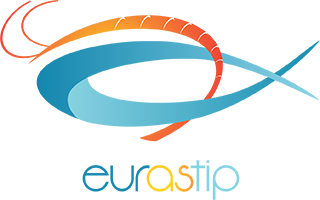EURASTIP has implemented proper measures to be GDPR compliant by 25 May 2018 and ensure your data is treated with the highest standards as laid out in the regulation.
The European Asian aquaculture Technology and innovation Platform (EURASTiP) is a three year research, development and innovation project, funded through the EU Horizon 2020 programme, and developed in response to EU call “reinforcing international cooperation on sustainable aquaculture production with countries from South East Asia”(see – H2020 SFS-24-2016). EURASTiP will provide a structured basis for multi-stakeholder dialogue in the aquaculture community, within South East Asia and between South East Asia and the EU. In order to achieve this, EURASTiP will build on the experience of the European Aquaculture Technology and innovation Platform (EATiP),the ASEM aquaculture platform and the individual EURASTiP consortium partners.
Context
The EU is the hub of the largest global market in seafood, of which c. 70 – 75% is imported, the majority from South East Asia.
With capture fishery yields proving static and increasingly subject to further regulation, the seafood market must look to aquaculture to meet the forecast increase in demand from consumers – estimated to be as much as c.100%.
There is a paradox in that modern commercial aquaculture largely exists through processes and technologies that were developed and/or perfected in Europe, yet South East Asia is by far the largest aquaculture production region in the world (c. 85% of all production).
Whilst European aquaculture production, often driven by consumer demands and multiple retailer product specification, has already responded to many challenges relating to environmental, food safety and consumer-related issues, the rapid growth of aquaculture now being witnessed in South East Asia poses serious challenges in terms of sustainability, social equity and suitable technologies.
Priorities
The scope for the EURASTiP could be very wide. However, in the development of the project, key themes have been prioritized, including:
- Food safety; sustainability; environmental and social impacts; consumer issues (including the scope of production standards, product quality and conformity); aquatic animal health and welfare.
In addition, further consideration will be given to:
- Sharing of best practices and experience in SME development and financing; capacity building and technology transfer in aquaculture and food products and the promotion of mobility of students/academics and strengthening of collaborations between educational organisations. Consideration will also be given to developing and strengthening networks facilitating employment opportunities, work placements, etc.
Cooperation
There are clear mutual benefits in developing cooperation between the Asian and European aquaculture sectors, ranging from the development of common solutions for shared technical and husbandry problems to the harmonisation of policy, regulations and production standards, all set in the context of rapidly expanding market demand.
Considering the projected growth in the aquaculture sector, there is general consensus that it is necessary to establish sustainable aquaculture practices to improve resource efficiency, reduce environmental impact, address market and consumer concerns and improve product marketing and aquaculture production reputation, specifically within the key South East Asian production areas.
The EU experience proves that achievement of these multiple objectives is best facilitated through a multi-disciplinary and multi-stakeholder approach. There is consensus across the sector that, as a high priority, this working methodology should be replicated in South East Asia.
The European Union has many successful examples, notably with the European Technology Platforms, where professionals, researchers, administrators and NGOs work together, providing a bottom-up approach to problem identification, prioritisation and solving. Such structures do not currently exist in South East Asia. A prerequisite for achieving successful cooperation between Europe and South East Asia is therefore to provide the necessary structural support to allow for dialogue between the industry and relevant stakeholders at both the national and international levels.
